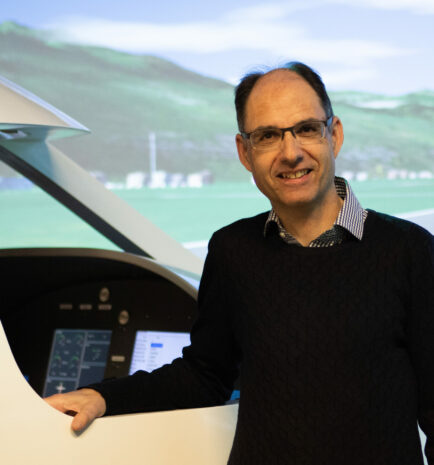
The digital world has changed how we design and operate systems. A modern aircraft is a complex system with different materials, propulsion, actuators, energy distribution, electronics, and sensors. During the design process nowadays, a lot of simulation tools are used and the whole aircraft becomes a digital database. Any physical mock-up is no longer necessary, and the trend goes even further with virtual testing for development and certification.
Nevertheless, as the complex interfaces of different systems have become not only physical but also data-driven, operators like airlines may face a number of challenges. Indeed, the introduction of new aircrafts with advanced technologies and composite materials, geared turbofans, and more electrical systems can influence the reliability of the system and cause delays in deliveries and operation.
In the sixth edition of the Connected Series, Prof. Dr. Michel Guillaume, Head of Center for Aviation, Zurich University of Applied Sciences, will talk about virtual design and operation of systems like aircrafts, which can improve the reliability during the aircrafts’ life cycle and predict potential failures. He will explain why feeding in sensor data from operation is needed to continuously improve the virtual operation. The ultimate goal is to achieve efficient maintenance and high reliability and ensure safe operation of aircrafts over the lifetime.
Subsequently, Dr. Xu Han, Post-doc Researcher at Beihang University, will introduce to us intelligent design and virtual testing techniques for actuation equipment, an elementary constitute of machinery and vehicles. Under the intelligent design scheme, the digital multi-domain coupling models are built to simulate comprehensive performance of actuation equipment. Regarding virtual testing, a co-simulation environment is developed to evaluate the final design solution, which can decrease the demand for full prototype testing and hereby decrease the cost and time needed for development. The intelligent design and virtual testing techniques that Dr. Xu Han will discuss in this webinar are examples that are taking advantage of recent computer and simulation technology which has enabled significant progress in the field of actuation.
Event Rundown
16:00-16:05 Introduction
(Libing Gu – Head of Academic Relations, Swissnex in China)
16:05-16:25 Virtual Design and Operation for Optimization of the Life Cycle
(Prof. Dr. Michel Guillaume – Head of Center for Aviation, Zurich University of Applied Sciences)
16:25-16:45 Intelligent Design and Virtual Testing for Actuation Equipment
(Dr. Xu Han – Post-doc Researcher, Beihang University)
16:45-17:00 Q&A
Speakers
-
![]()
Bio
Prof. Dr. Michel Guillaume
Head of Center for Aviation, Zurich University of Applied SciencesProf. Dr. Michel Guillaume is the Head of the Centre of Aviation (ZAV), the leading research hub for aviation in Switzerland, at Zurich University of Applied Sciences (ZHAW). He is also the Professor for Systems Integration and Structural Integrity at the School of Engineering of ZHAW and teaches courses at ETH Zurich, TEKO Zurich, and University of St. Gallen. He obtained his PhD from ETH Zurich in 1994 and worked for over a decade at RUAG Aerospace where he was at first project manager for the Swiss F/A-18 full scale fatigue test and then general manager of the Aerodynamics Center. His expertise and research interests focus on aerodynamics, aircraft design, structural integrity, damage tolerance, and fatigue analysis.Dr. Xu Han
-
![]()
Bio
Dr. Xu Han
Post-doc Researcher, Beihang UniversityDr. Xu Han is currently a post-doctoral researcher at Beihang University, China. He received his bachelor’s degree in mechanical engineering from Yanshan University, China in 2011, and master and Ph.D. degree in mechatronics from Beihang University, China in 2014 and 2019 respectively. His research interests include hydraulic transmission and control, electro-hydrostatic actuator, mechatronic system, modelling and simulation, design and optimization.
In collaboration with
Connected Series
The Connected Series is a new format at Swissnex in China putting a spotlight on the best Sino-Swiss collaboration projects and research efforts. It highlights how teams from both countries can best work together to create synergies and get their projects off the ground.



